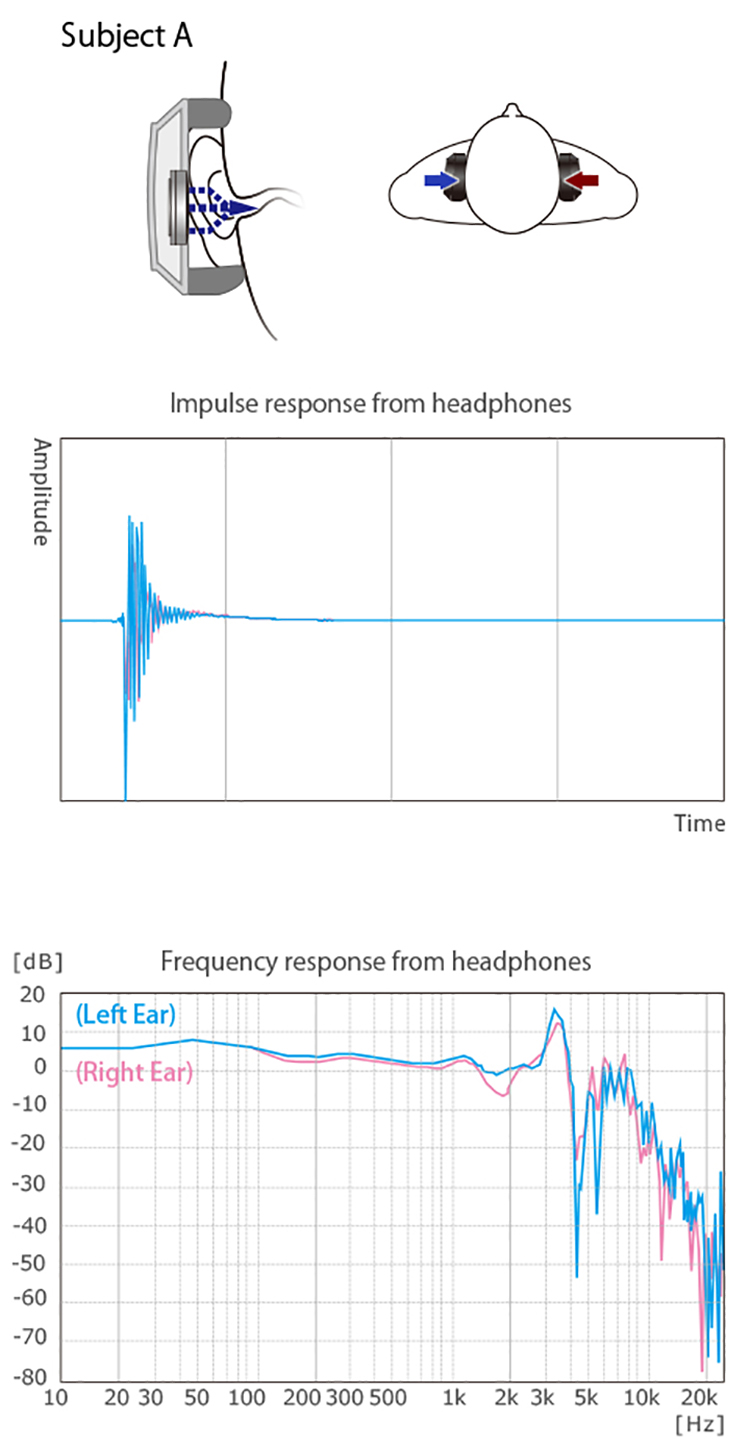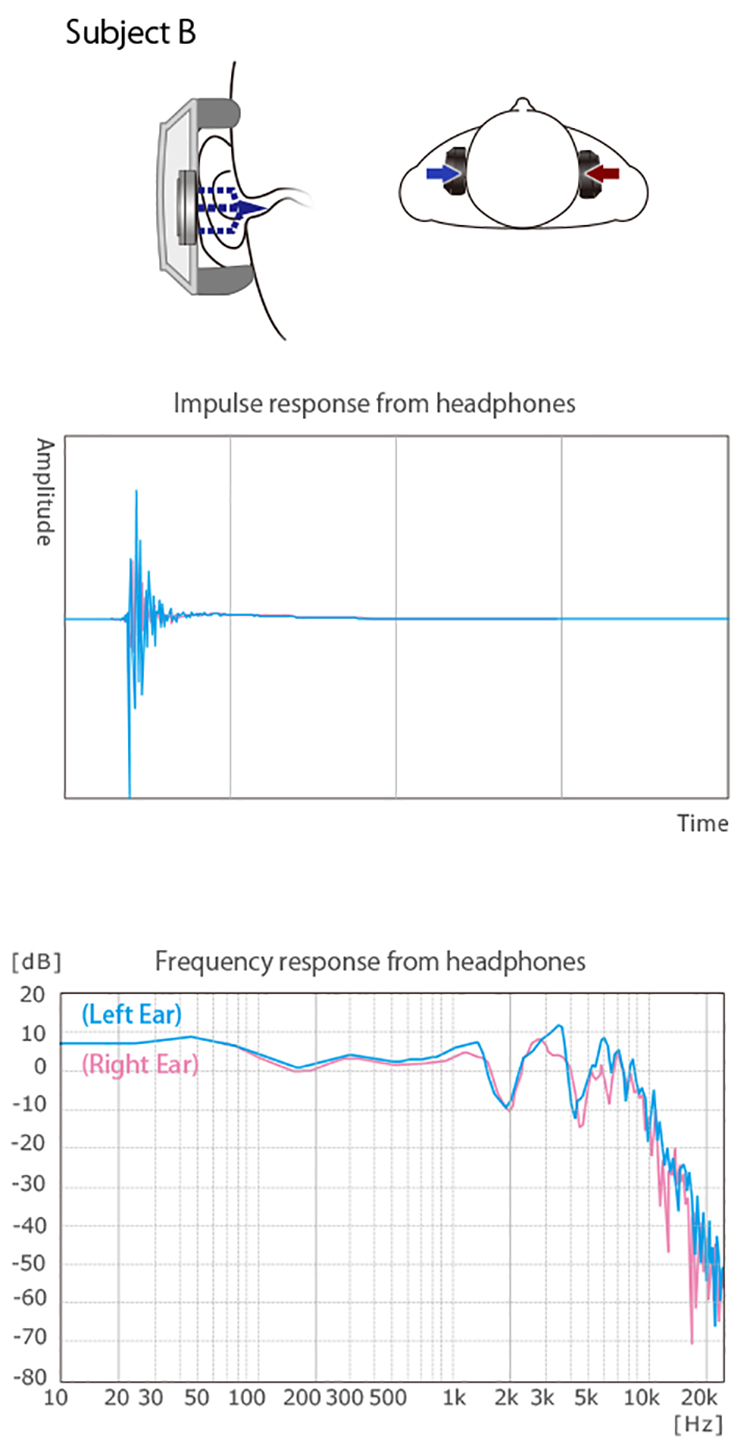EXOFIELD Feature (1)
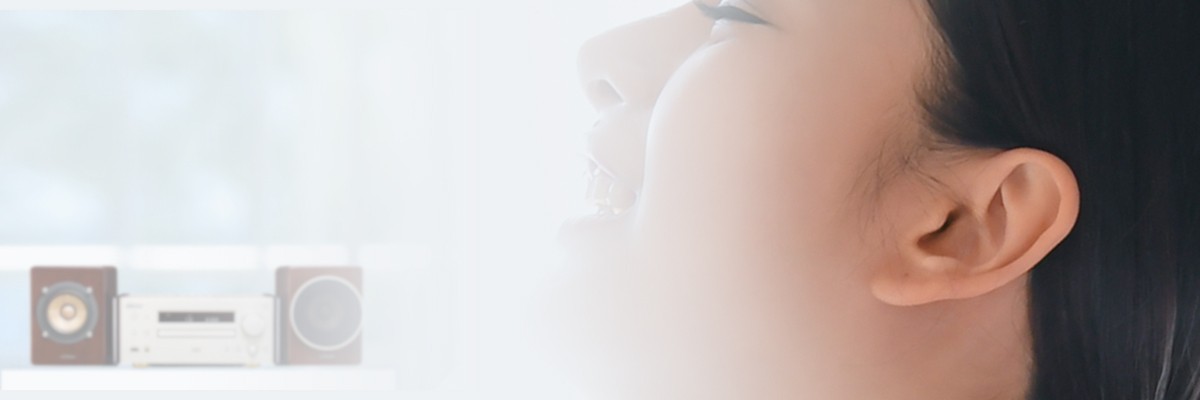
Measures various acoustic characteristics of individuals to enable optimal sound field processing for "out-of-head" localization sound fields
Humans perceive the direction of a sound source by capturing differences including the timing that sound reaches the left and right ears, as well as loudness and tone of the sound. In addition, our brain registers the acoustic characteristics that arise from variations in the shape of each individual's pinna and head and determines the direction of a sound source based on such empirical information. This is known as the "head-related transfer function (HRTF)".
In a listening room that is installed with stereo speakers, what we hear is a mixture of both direct sound from the speakers as well as sound that is reflected from the floor and walls. Listeners identify the sound field in front of them based on the configuration of the sound that they hear. Both direct and reflected sounds are made up of the acoustic characteristics of the speakers, room acoustics as well as individual characteristics such as the shape of the listener's ears. For headphones, only the direct sound of the left and right units reaches the eardrum, and it does not combine with other sounds that are transmitted through space. For this reason, the sound field is localized inside the head without grasping spatial information (in-head localization).
In the past, conventional "out-of-head" localization headphone technology performs arithmetic processing using a standard head-related transfer function. As such, headphones are not adjusted to fit individual users who have different ear and face shapes, and are unable to deliver optimal performance to each user.
"EXOFIELD" makes it possible to measure and analyze the personal characteristics of individual users, such as the shape of their ears and face, as well as all acoustic characteristics including those of audio speakers, headphones and listening rooms to perform audio signal processing that is optimally customized to individual users. The technology enables optimal out-of-head localization for each user, unlike the conventional out-of-head localization sound field.
(34 pending related patents)
Recognizing the Direction of the Sound Source
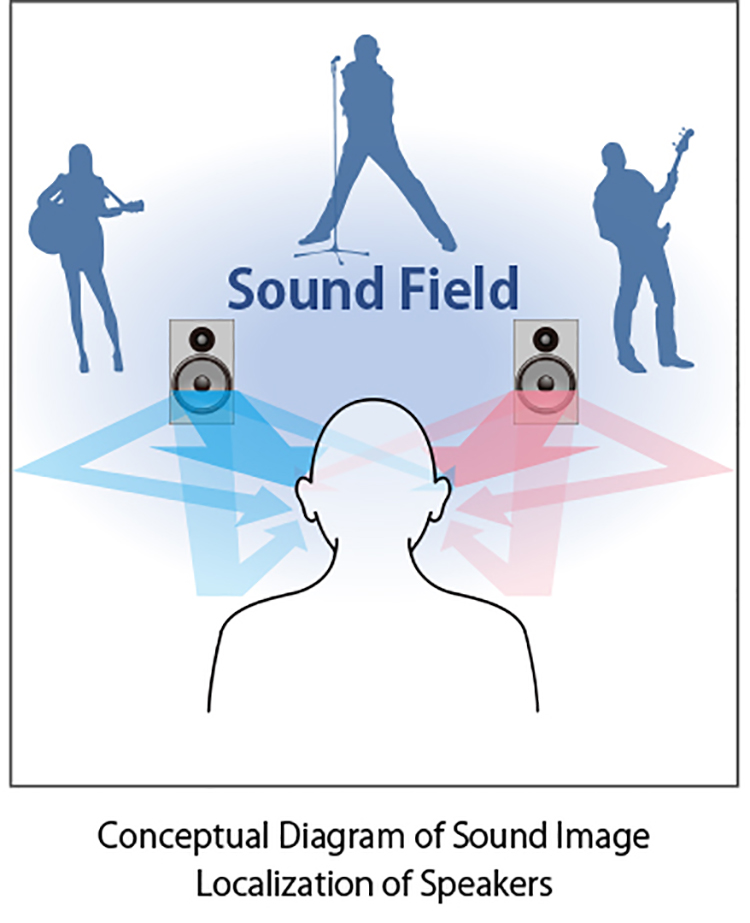
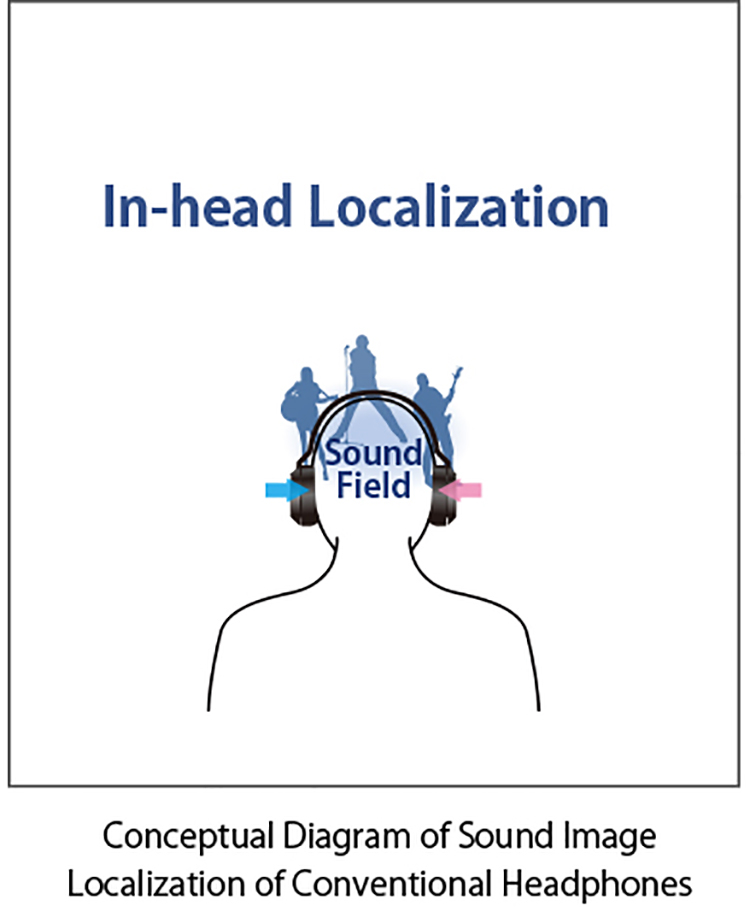
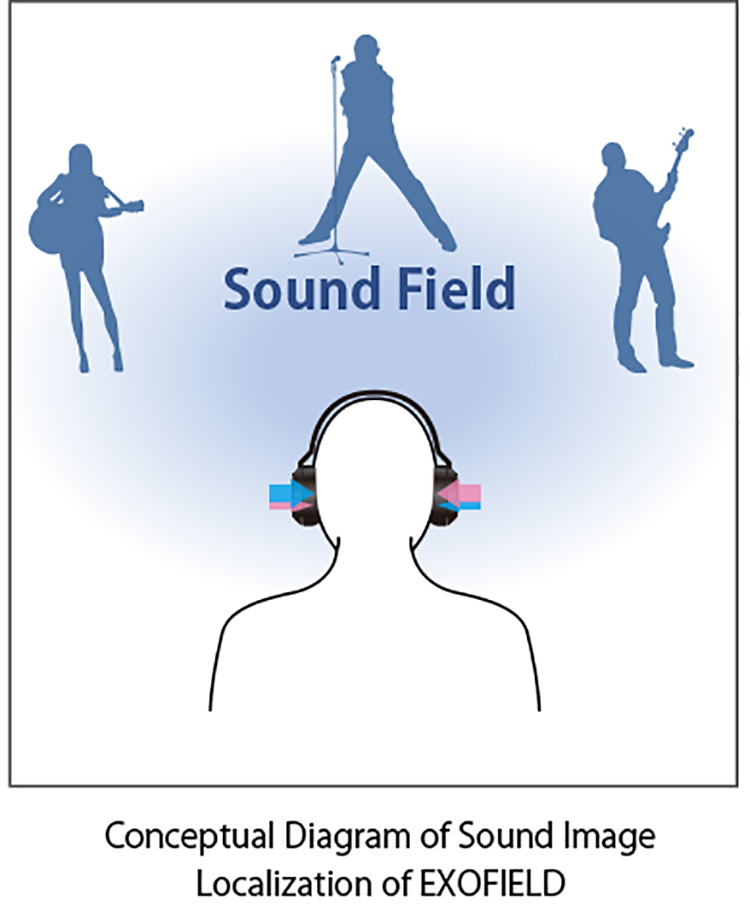
Head-related Transfer Function (HRTF)
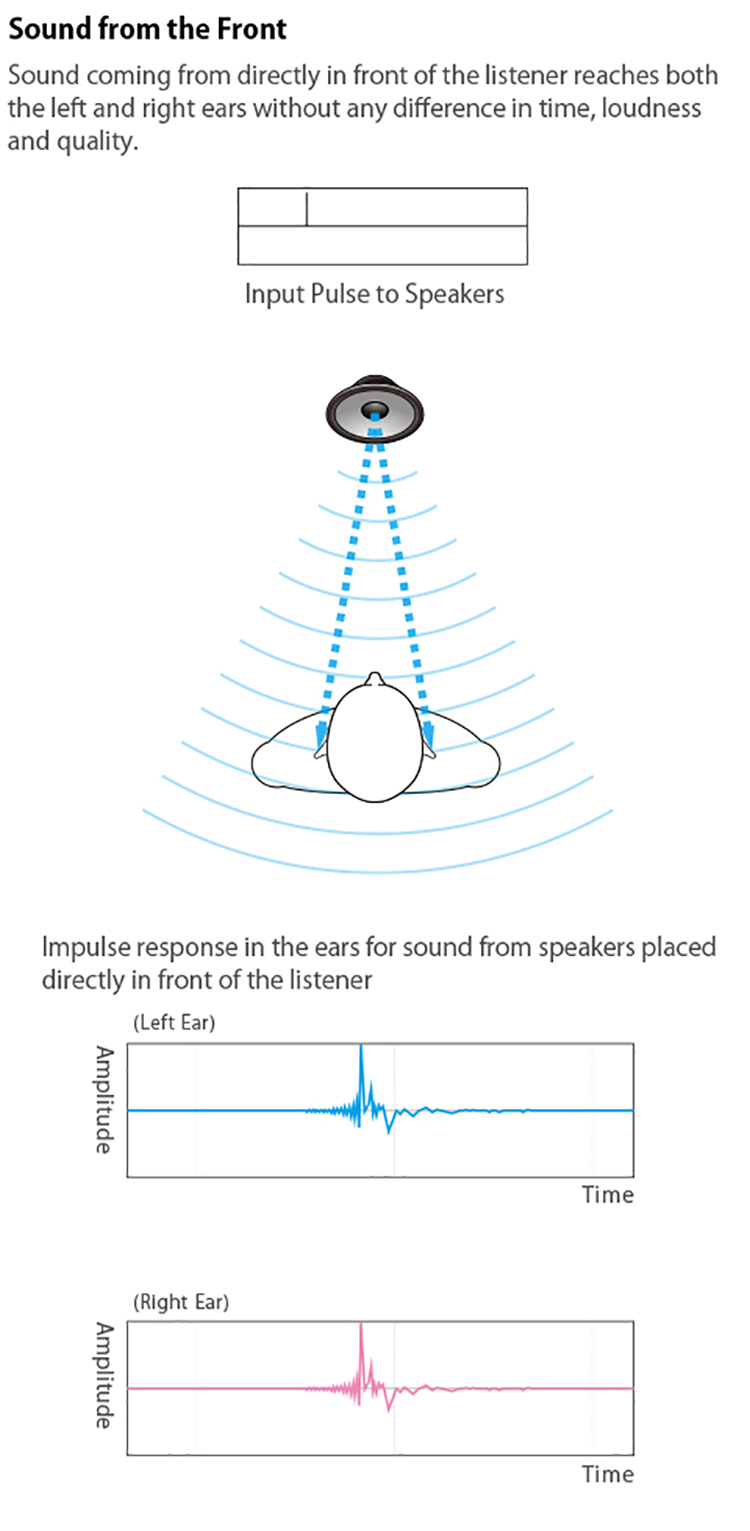
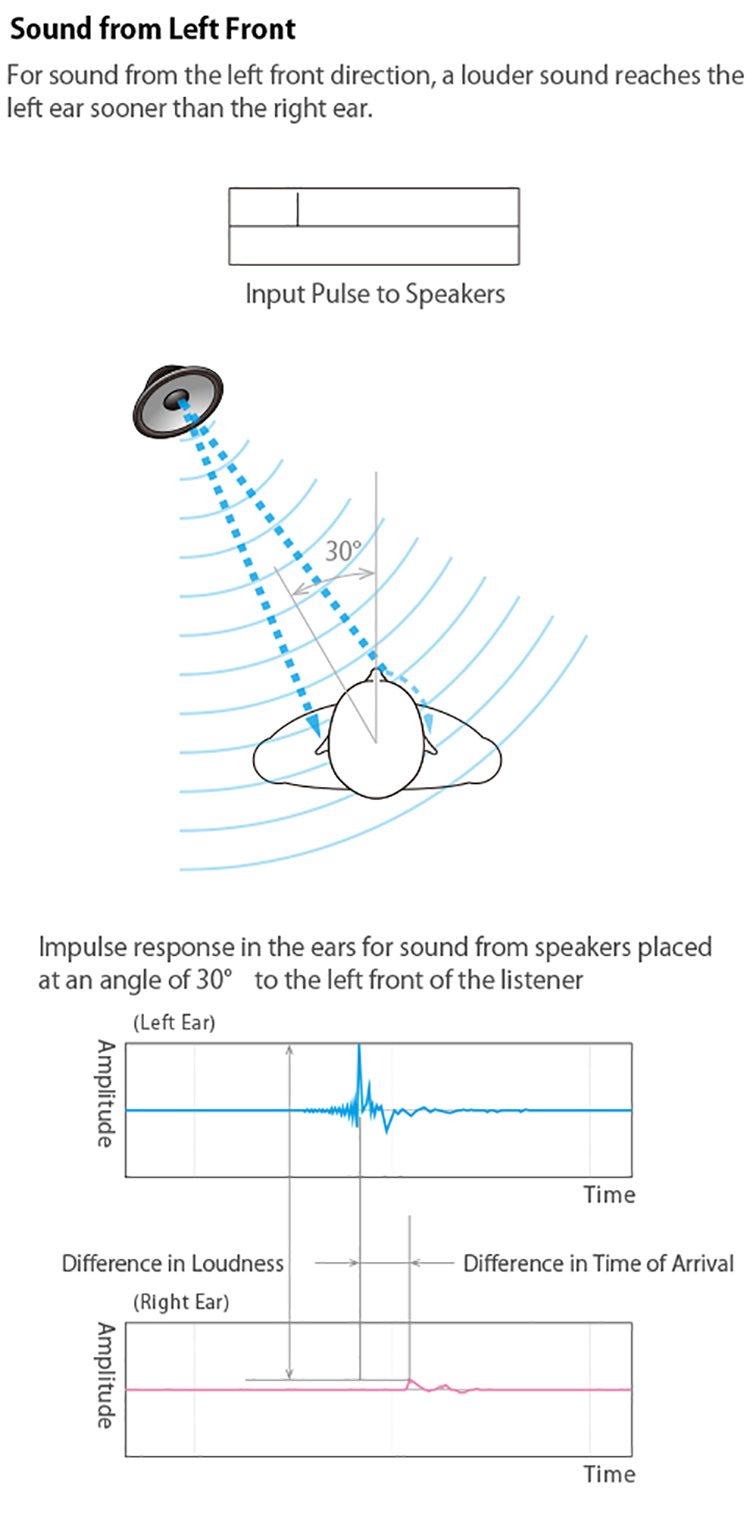
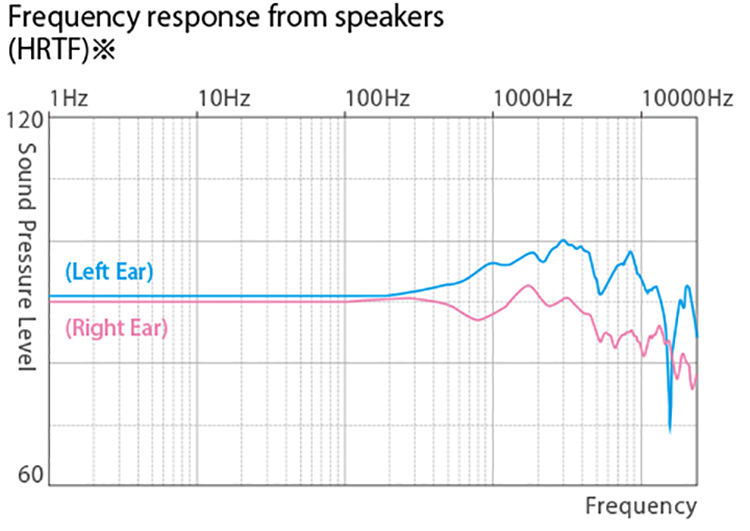
※Head-related Transfer Function (HRTF)
Sound from a sound source that travels in free space is subject to changes according to the surrounding objects such as the shape of the pinna and head of the listener before reaching the eardrum. HRTF is a transfer function that expresses the change between the sound at the source and that at the sound-receiving point in the eardrum or entrance of the ear canal.
It is used for expressing the frequency range, and denotes the number of frequency components used for one input pulse to the sound source to reach the ears.
Sound Field and Individual Ear Characteristics
Sound Field in a Listening Room
In a listening room, what we hear is a mixture of both direct sound from the speakers as well as sound that is reflected from the floor and walls. We identify the sound field based on the configuration of the sound that we hear. Both direct and reflected sounds are made up of the acoustic characteristics of the speakers, room acoustics as well as the shape of the ears of the listener.
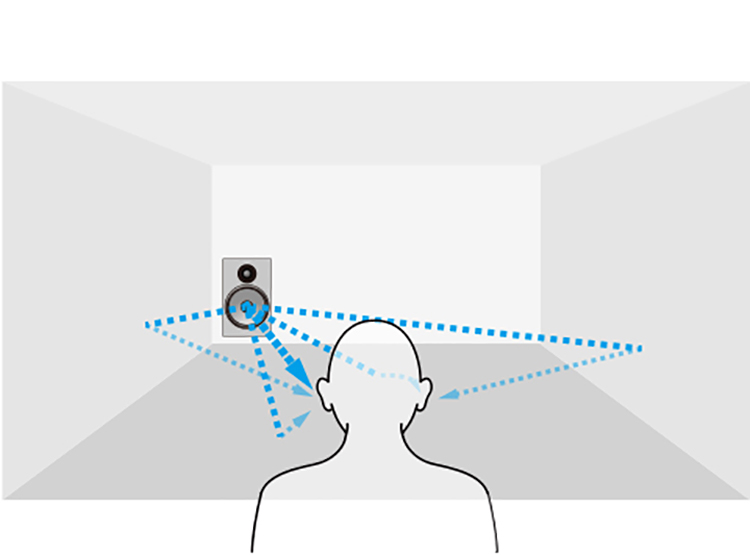
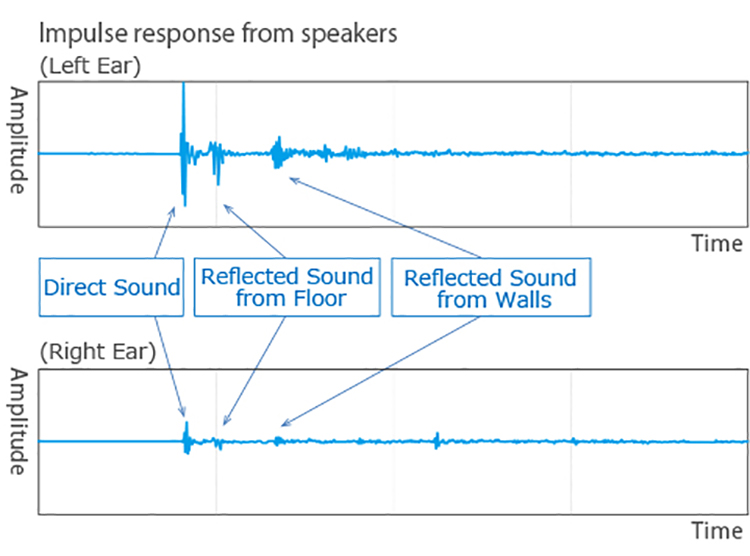
Individual Ear Characteristics
Different sounds including direct and reflected ones are directed by the pinna to the eardrum through the ear canal. Sound that reaches the eardrum varies across individuals due to differences in the shape and angle of the pinna. Such personal characteristics affect all direct and reflected sounds.
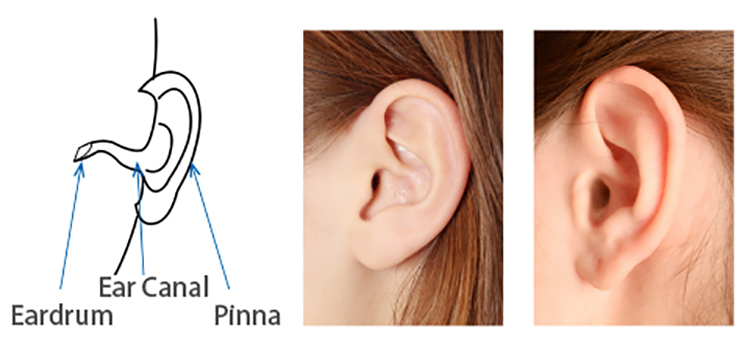
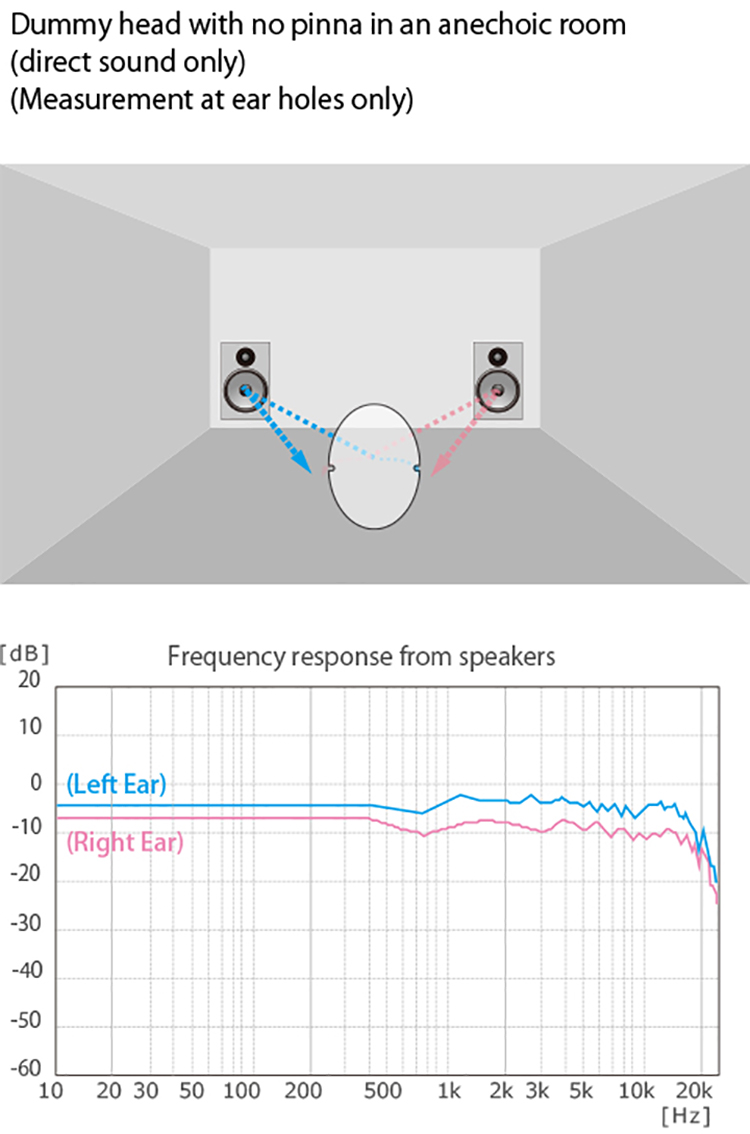
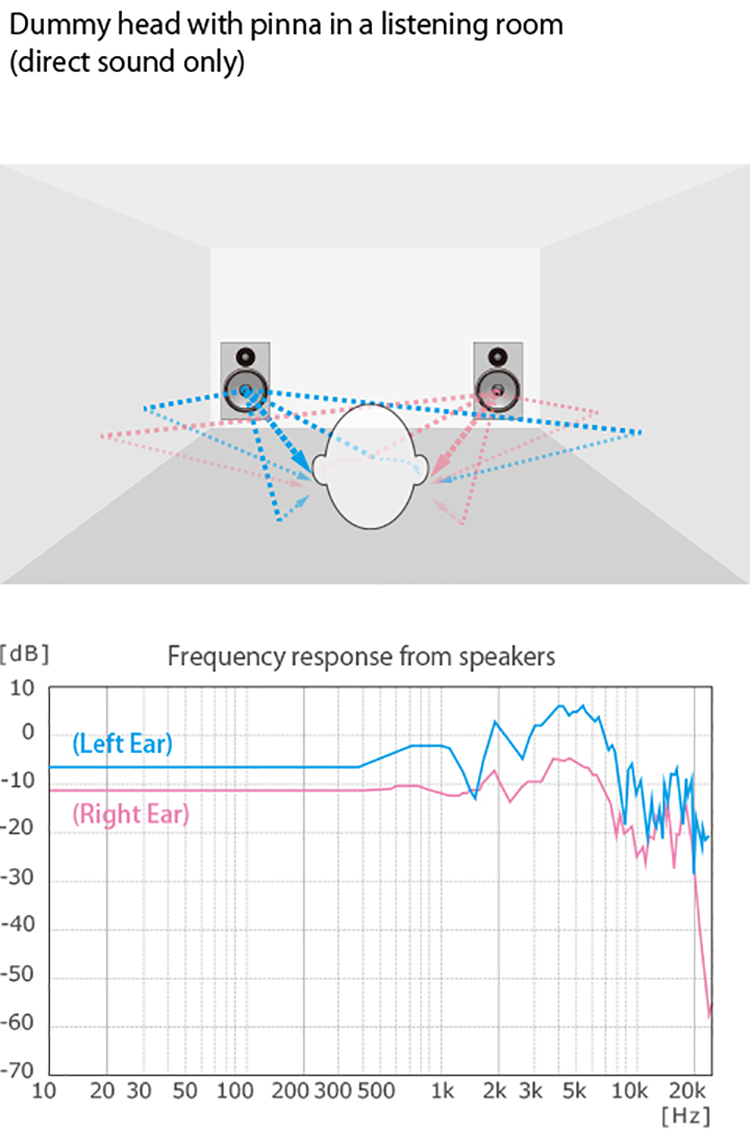
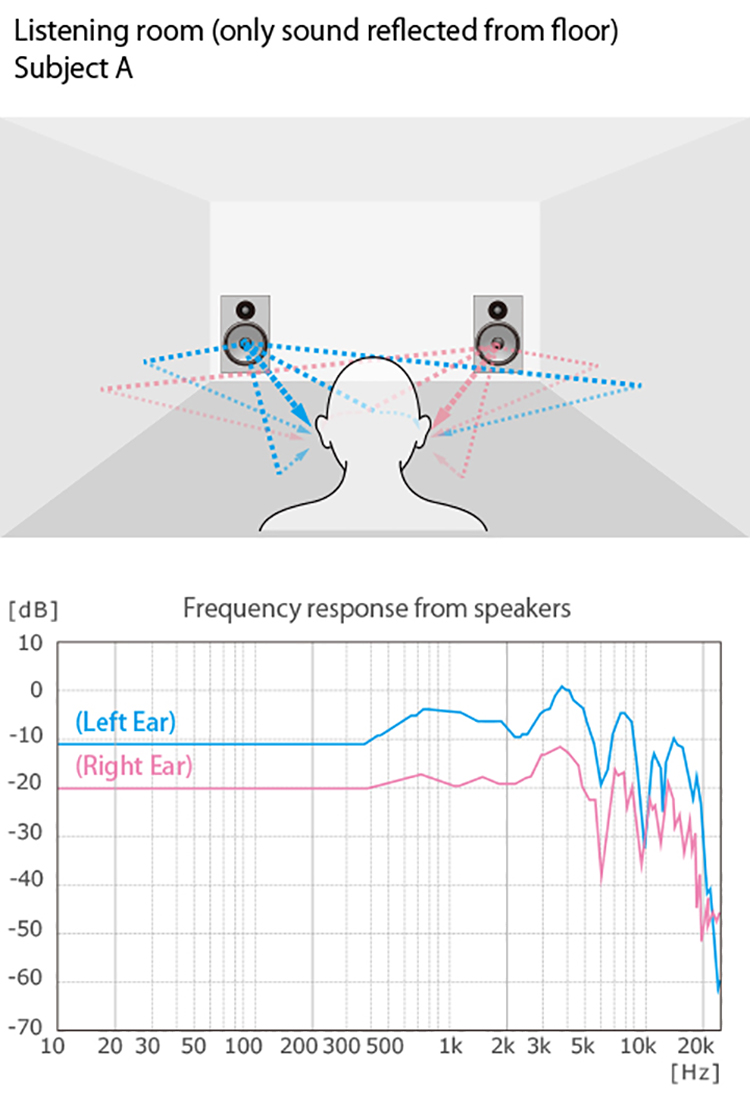
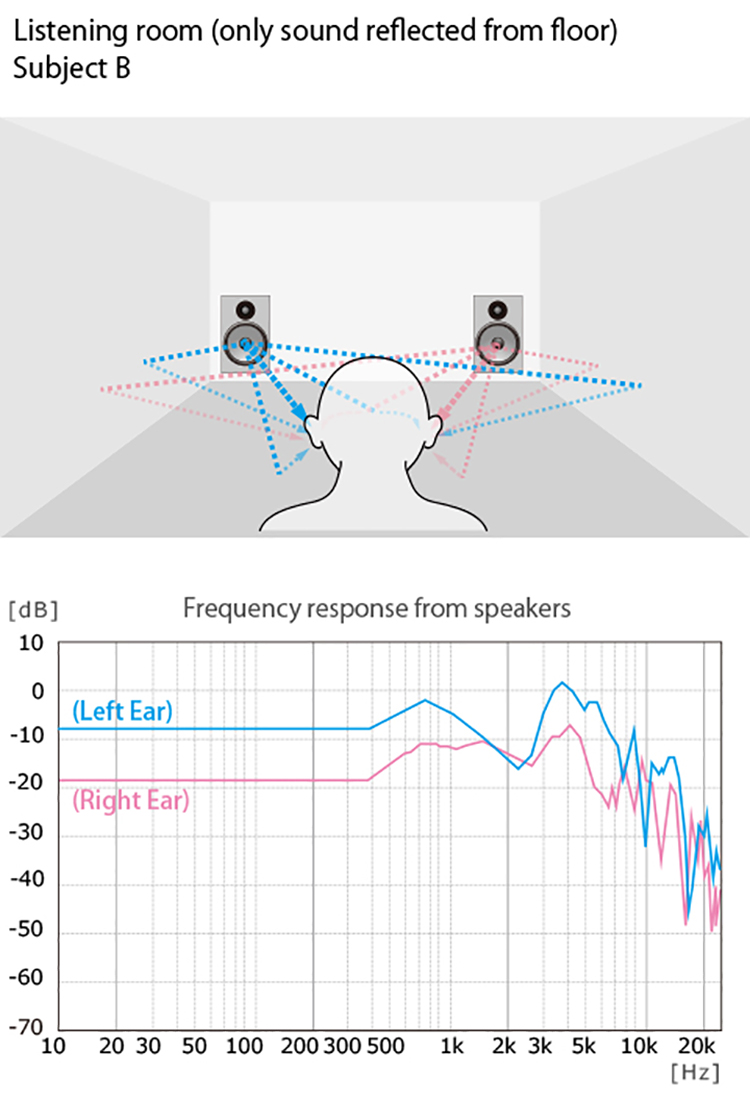
Individual Differences in Headphone Characteristics
Headphone characteristics (ECTF: Ear Canal Transfer Function)
Even for headphones with only direct sound, there will still be individual differences depending on the shape of the ears, which particularly affects the frequency characteristics in the medium to high range.
